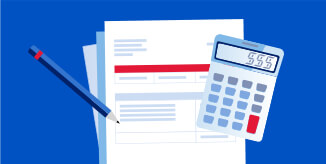4 key credit moves for 20-somethings
What you can do now to boost your credit score and build the foundation for your financial future
Read, 4 minutes
Credit is an important factor when buying a car, renting an apartment and getting the best insurance rates. But building a solid credit history takes time. Establishing good habits early on is key to helping you reach your personal and financial goals later in life.
Here’s a look at four important steps that can help you build a solid credit history.
Article continues below
Related content
Pay your bills on time and in full
Payment history accounts for just over a third of your credit score. Credit scorer FICO recommends that you always pay your bills on time to avoid late fees and negative marks on your credit report. While credit cards and loans almost certainly appear on your credit report, other billers, such as utilities and cell phones, sometimes report payment histories too (especially if you’re late paying). So paying on time is important for all your bills.
Ideally, pay off the balance in full each month to avoid paying interest charges. But if this isn’t possible, be sure to pay at least the minimum amount required every month. And if you can pay a little more than the minimum, it can save you on interest costs in the long run.
Consider tools to help establish credit
If you have trouble getting a credit card—and that may be the case if you haven’t had access to credit—there are a few options that could help get you started. Some banks offer credit cards designed to help students establish credit, so look around for cards that are made for student use. Also, consider a checking account. While this won’t necessarily help you build credit, having a good relationship with a financial institution could help you get a loan down the line or even your first credit card.
You might also consider a secured card. With these cards, you make a security deposit in advance for the amount you want to borrow. This gives the bank collateral—something the lender can use should you not make your payments. Timely payments on a secured card can help you qualify for an unsecured credit card with a larger credit line.
Another option to build credit: If you have a parent or other family member with good credit who’s willing to make you an authorized user on his or her account, doing so can help you develop your credit history.
Lenders don’t like to see you carry over more than 20% of your available credit on a monthly basis.
Don't use all your credit
Lenders don’t like to see you use all your available credit, even if you pay it off each month. Try to keep your borrowing below 30 percent of your total available credit. This is called your credit utilization rate.
Card limit:
$5,000
If you spend:
$2,500
you’ve used 50%
If you spend:
$1,000
you’ve used 20%
For instance, if you have a credit limit of $5,000 and your charges total $2,500, you use half your available credit for that card. If your balance is $1,000, you use 20 percent.
Check your credit once a year
By law, once a year consumers are allowed to check their credit reports for free from each of the three credit bureaus. Some credit card issuers also give you a copy of your credit score for free. This is a good opportunity to make sure your issuers correctly report to the credit bureaus and to check for any fraudulent activity.
Using credit sensibly early on—by keeping tabs on your credit report and paying your bills on time—can help open doors for you financially and professionally. Develop strong habits now and see where your future takes you.
